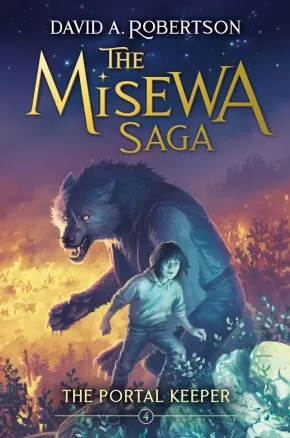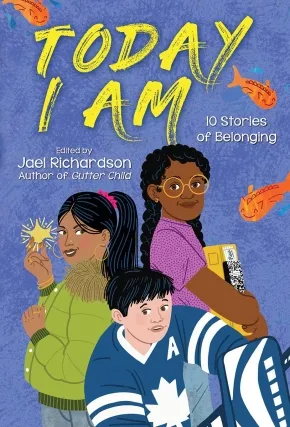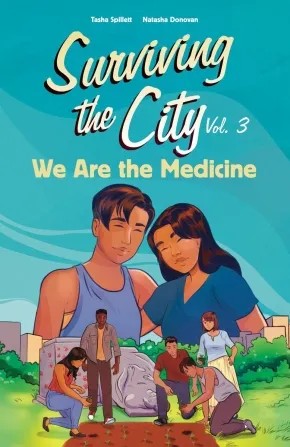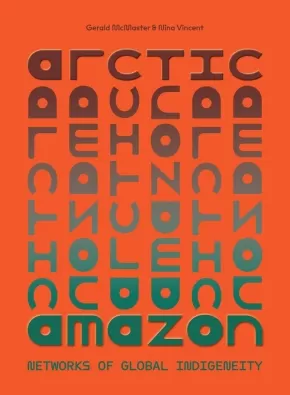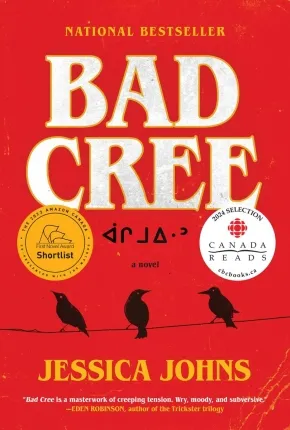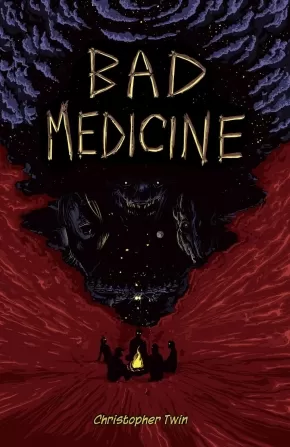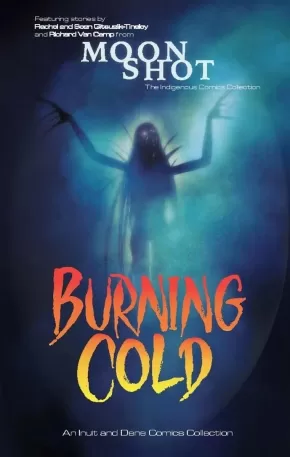
Cree (Nehiyawak)
46
-
60
of
174 Results;
Sort By
Go To
of 12
The Other Side of Perfect
$25.99
Format:
Hardcover
Text Content Territories:
Indigenous Canadian; First Nations; Cree (Nehiyawak);
ISBN / Barcode: 9781339002859
Synopsis:
Synopsis:
Two kids from two different worlds form an unexpected friendship in this lens into the interworking of empathy. Told in alternating narratives, The Other Side of Perfect is infused with themes of identity, belonging, and compassion, reminding us that we are all more than our circumstances, and we are all more connected than we think.
Cody’s home life is a messy, too-often terrifying story of neglect and abuse. Cody himself is a smart kid, a survivor with a great sense of humor that helps him see past his circumstances and begin to try to get himself out. Autumn is a wealthy girl from an indigenous family, who has found herself in with the popular crowd even though it’s hard for her to want to keep up.
But one night, while returning home from a movie, Autumn comes across Cody, face down in the laneway behind her house. All Cody knows is that he can’t take another encounter with his father like the one he just narrowly escaped. He can’t go home. But he doesn’t have anywhere else to go. When Autumn agrees to let him hide out in her dad’s art studio, Cody’s story begins to come out, and so does hers.
Reviews"
"Dual perspectives illuminate cultural and class differences in this thought-provoking novel by Cree and Scottish author Florence (Legends of Funland) and Scrimger (Weerdest Day Ever!)" -- Publisher's Weekly
Educator Information
Recommended for ages 8 to 13.
Additional Information
256 Pages | 5.50" x 8.25" | Hardcover
The Portal Keeper (PB)
$12.99
Format:
Paperback
Text Content Territories:
Indigenous Canadian; First Nations; Cree (Nehiyawak); Swampy Cree ;
ISBN / Barcode: 9781774880272
Synopsis:
Synopsis:
Eli and Morgan experience life-changing revelations in this new adventure in the award-winning, Narnia-inspired Indigenous middle-grade fantasy series.
While exploring World’s End, an area in Aski they've just discovered, Morgan and Emily delight in their developing relationship, while Eli struggles to understand his new-found power: the ability to locate a portal. A shocking turn of events leads them to a new village, Ministik, where the animal beings who live there are going missing. Horrified to discover who is responsible, the children vow to help and turn to friends, old and new. But it's getting harder and harder to keep the two worlds separate, especially when details of a traditional legend change everything. Forever.
Reviews
"Delivers what series fans have come to expect: fast-paced adventure, humorous banter, and tender explorations of Indigenous experiences." —Kirkus Reviews
"David A. Robertson’s novel The Portal Keeper, a remix of The Chronicles of Narnia set in Winnipeg, is an exciting new instalment that adds its distinct touch on the world that Robertson has been building on for the past four years." —Northern News Service
"The Portal Keeper is another excellent instalment in the Misewa Saga. Robertson’s increasingly masterful prose keeps readers engaged, curious, and on the edge of their seats."—The Anishinabek News
Educator & Series Information
Recommended for ages 10+.
This is the fourth book in the Misewa Saga. Narnia meets traditional Indigenous stories of the sky and constellations in this epic middle-grade fantasy series from award-winning author David Robertson.
Additional Information
256 pages | 5.50" x 8.25" | Paperback
The Sleeping Giant (PB)
$12.99
Format:
Paperback
Text Content Territories:
Indigenous Canadian; First Nations; Cree (Nehiyawak); Swampy Cree ;
ISBN / Barcode: 9781774881842
Synopsis:
Synopsis:
Eli and Morgan embark on a dangerous mission to rescue kidnapped animal beings in this new adventure in the award-winning, Narnia-inspired Indigenous middle-grade fantasy series.
Eli, Morgan and Emily embark on their most dangerous mission yet, to save the kidnapped animal beings of Ministik. But before they can reach the heavily guarded Land of the Sleeping Giant, Eli must rally more help, not just from old friends, but from surprising new allies. And he must rely on a new way to travel: on the back of the leader of the Bird Warriors himself, Pip. Together they will journey across the North Country, on a mission to reconnect the Bird Warriors, as well as confront old enemies. But even as he must fight for his life – and the lives of his friends and new family – Eli must also come to terms with his newfound knowledge: What does it mean that he is only part human?
Reviews
"Robertson's many fans will undoubtedly enjoy the action and excitement this book contains." —The Winnipeg Free Press
"In all 'The Misewa Saga' novels, Eli has been 'an old soul,' and, in this novel, he demonstrates a sense of compassion far beyond his years." —CM: Canadian Review of Materials
"Roberston’s storytelling dramatically builds tension, while showing love, friendship, and community between various characters . . . Like the other volumes in the series, The Sleeping Giant is a wonderful must-read for youth and adults alike." —Anishinabek News
Educator & Series Information
Recommended for ages 10+.
This is the fifth book in the Misewa Saga. Narnia meets traditional Indigenous stories of the sky and constellations in this epic middle-grade fantasy series from award-winning author David Robertson.
The Misewa Saga series reflects stories of the sky and the constellations held within its great canvas. The word “misewa” is Cree for “all that is” — elders say that what is above is mirrored below, and this is the connection we have with misewa.
Additional Information
216 pages | 5.50" x 8.25" | Paperback
Those Pink Mountain Nights (PB)
$19.99
Format:
Paperback
Text Content Territories:
Indigenous Canadian; First Nations; Cree (Nehiyawak); Métis;
ISBN / Barcode: 9780063086227
Synopsis:
Synopsis:
In her remarkable second novel following her Governor General’s Award-winning debut, The Summer of Bitter and Sweet, Jen Ferguson writes about the hurt of a life stuck in past tense, the hum of connections that cannot be severed, and one week in a small, snowy town that changes everything.
Overachievement isn’t a bad word—for Berlin, it’s the goal. She’s securing excellent grades, planning her future, and working a part-time job at Pink Mountain Pizza, a legendary local business. Who says she needs a best friend by her side?
Dropping out of high school wasn’t smart—but it was necessary for Cameron. Since his cousin Kiki’s disappearance, it’s hard enough to find the funny side of life, especially when the whole town has forgotten Kiki. To them, she’s just another missing Native girl.
People at school label Jessie a tease, a rich girl—and honestly, she’s both. But Jessie knows she contains multitudes. Maybe her new job crafting pizzas will give her the high-energy outlet she desperately wants.
When the weekend at Pink Mountain Pizza takes several unexpected turns, all three teens will have to acknowledge the various ways they’ve been hurt—and how much they need each other to hold it all together.
Jen Ferguson burst onto the YA scene with her first novel, which was a William C. Morris Award Finalist and a Stonewall Award Honor Book, and this second novel fulfills her promise as one of the most thoughtful and exciting YA writers today.
Reviews
"Set in Alberta, this introspective, character-driven story examines heavy topics, including Missing and Murdered Indigenous Women, depression, and anti-Blackness, with sensitivity and compassion. This sophomore outing by Michif/Métis and white author Ferguson features lyrical prose that softens the emotionally fraught narrative without sacrificing suspense, resulting in a mystery that subtly builds to a shocking reveal." — Kirkus Reviews (starred review)
"Ferguson's stirring narrative from multiple points of view features a friendship breakup, a manifestation of depression as perfectionism, and racism in the 'corrupt colonial country of Canada.' Achingly stunning prose, 'absolute mischief,' and exhilarating kisses compel a fast read." — Shelf Awareness (starred review)
Educator Information
Recommended for ages 13+.
Additional Information
352 pages | 5.31" x 8.00" | Paperback
Today I Am: 10 Stories of Belonging
$16.99
Editors:
Format:
Paperback
Text Content Territories:
Indigenous Canadian;
ISBN / Barcode: 9781443192354
Synopsis:
Synopsis:
A fresh and fearless collection of short fiction, poetry and graphic fiction for today’s middle-grade readers.
In this timely, thought-provoking, funny and heartbreaking collection, ten acclaimed BIPOC authors from across Canada explore the theme and concept of home.
From awkward family dinners, to life on the rez, to moving to a new town, each of these stories provides a unique perspective on the theme of belonging through characters tasked with navigating and finding their place in this world.
Brought together by curator (and story contributor), Jael Richardson, Today I Am will make readers laugh and cry while opening their hearts and minds to the world around them, validating how it feels to be young and alive today.
Today I Am includes stories by Jael Richardson, Marty Chan, Rosena Fung, Michael Hutchinson, Chad Lucas, Angela Misri, Mahtab Narsimhan, Danny Ramadan, Liselle Sambury and Brandon Wint.
Educator Information
Recommended for ages 10 to 14.
The majority of authors on this work are not Indigenous. This work includes a contribution from Michael Hutchinson, a citizen of the Misipawistik Cree Nation. Readers will need to determine if this text will work for their purposes.
Additional Information
240 pages | 5.49" x 8.25" | Paperback
We Are the Medicine: Surviving the City Vol. 3
$21.95
Artists:
Format:
Paperback
Text Content Territories:
Indigenous Canadian; First Nations; Cree (Nehiyawak); Anishinaabeg;
ISBN / Barcode: 9781774921104
Synopsis:
Synopsis:
Miikwan and Dez are in their final year of high school. Poised at the edge of the rest of their lives, they have a lot to decide on. Miikwan and her boyfriend, Riel, are preparing for university, but Dez isn’t sure if that’s what they want for their future.
Grief and anger take precedence over their plans after the remains of 215 children are found at a former residential school in British Columbia. The teens struggle with feelings of helplessness in the face of injustice. Can they find the strength to channel their frustration into action towards a more hopeful future?
We Are the Medicine is the moving final volume of the best-selling Surviving the City series.
Reviews
"Tasha's graphic novel gives us an unflinching view of youth sovereignty and the reclamation of Indigenous philosophy and sacred spaces in Winnipeg's core. Guided by an Elder, the friends at the centre of the story confront uncomfortable truths that have sustained our colonial past, riding on the edge of emotions and activism to uphold the integrity of their ancestors. A must-read for all youth who want to build an equitable, just society." — Elder Albert McLeod, author of Between the Pipes
“A fantastic read for teens to learn about Indigenous issues through a clear and accurate representation.” — Youth Services Book Review
Educator & Series Information
Recommended for ages 12 to 18.
This is the third volume in the Surviving the City graphic novel series, which is also part of the Debwe Series.
Surviving the City is a contemporary graphic novel series about young Indigenous women navigating their way in an urban environment. It includes:
Surviving the City
From the Roots Up
We Are the Medicine
A Teacher Guide is available: Surviving the City Teacher Guide: Exploring Identity, Allyship, and Social Action for Meaningful Change in Grades 7-12
Recommended in the Indigenous Books for Schools catalogue as a valuable resource for English Language Arts and Social Studies in grades 8 to 12.
Caution: This work's topics include residential schools, death, violence, police brutality, and racism.
Themes: Coming of Age, Community, Connection to Culture, Healing, Residential Schools.
Additional Information
64 pages | 6.50" x 10.00" | Paperback
Who We Are: Four Questions For a Life and a Nation (HC) (2 in Stock)
$39.95
Format:
Hardcover
Text Content Territories:
Indigenous Canadian; First Nations; Anishinaabeg; Ojibway;
Reading Level: N/A
ISBN / Barcode: 9780771099106
Synopsis:
Synopsis:
Judge, senator, and activist. Father, grandfather, and friend. This is Murray Sinclair’s story—and the story of a nation—in his own words, an oral history that forgoes the trappings of the traditional written memoir to center Indigenous ways of knowledge and storytelling. As Canada moves forward into the future of reconciliation, one of its greatest leaders guides us to ask the most important and difficult question we can ask of ourselves: Who are we?
For decades, Senator Sinclair has fearlessly educated Canadians about the painful truths of our history. He was the first Indigenous judge in Manitoba, and only the second Indigenous judge in Canadian history. He was the Chair of the Truth and Reconciliation Commission, and remains one of the foremost voices on Reconciliation. And now, for the first time, he will share his full story—and his full vision for our nation—with readers across Canada.
Drawing on Senator Sinclair’s unique experiences, and his perspectives regarding Indigenous identity, human rights, and justice in Canada, Who We Are will examine the roles of history, resistance, and resilience in the pursuit of finding that path forward, and healing the damaged relationship between Indigenous Peoples and non-Indigenous peoples in Canada. And in doing so, it will reveal Senator Sinclair’s life in a new and direct way, exploring how all of these experiences shaped him as an Anishinaabe man, father, and grandfather.
Structured around the four questions that have long shaped Senator Sinclair’s thinking and worldview—Where do I come from? Where am I going? Why am I here? Who am I?—Who We Are will take readers into the story of his remarkable life as never before, while challenging them to embrace an inclusive vision for our shared future.
Additional Information
480 pages | 6.00" x 9.00" | Hardcover
acâhkos nikamowini-pîkiskwêwina?: nêhiyawi-kîsik âcimowin? The Star Poems: A Cree Sky Narrative
$24.95
Format:
Paperback
Text Content Territories:
Indigenous Canadian; First Nations; Cree (Nehiyawak);
ISBN / Barcode: 9781778690174
Synopsis:
Synopsis:
Aided by Grandmother Spider, Star Woman discovers the Hole-in-the-Sky, opening a pathway for the Star People to experience the wonder of life on earth. But the world falls into the hands of the Paper People, jeopardizing the sacred harmony between nature and the cosmos. And so Little Spirit, a young boy, must search for meaning and find redemption in the care of Grandmother Moon.
An epic narrative, The Star Poems explores the black hole of colonial history—Residential Schools, the loss of the father, youth suicide—and the vital role of women in reclaiming our traditional knowledge, the teachings that stitch together the fabric of the universe.
The Star Poems creatively engages Cree oral tradition in a new way, connecting Indigenous spirituality and quantum physics to honour and adapt some of our most ancient stories about the origins of life and our place in the universe. Presented in both English and Cree, The Star Poems is a timely contribution to the revitalization of the Cree language—and the fascinating world of star stories.
Educator Information
Recommended for ages 15+
Additional Information
132 pages | 6.00" x 9.00" | Paperback
Arctic/Amazon: Networks of Global Indigeneity
$60.00
Editors:
Format:
Hardcover
Text Content Territories:
Indigenous Canadian; Indigenous South American;
Grade Levels: 12; University/College;
ISBN / Barcode: 9781773102993
Synopsis:
Synopsis:
Arctic/Amazon: Networks of Global Indigeneity offers a conversation between Indigenous Peoples of two regions in this time of political and environmental upheaval. Both regions are environmentally sensitive areas that have become hot spots in the debates circling around climate change and have long been contact zones between Indigenous Peoples and outsiders — zones of meeting and clashing, of contradictions and entanglement.
Opening with an Epistolary Exchange between the editors, Arctic/Amazon then widens to include essays by 12 Indigenous artists, curators, and knowledge-keepers about the integration of spirituality, ancestral respect, traditional knowledges, and political critique in artistic practice and more than 100 image reproductions and installation shots. The result is an extraordinary conversation about life, artistic practise, and geopolitical realities faced by Indigenous peoples in regions at risk.
Additional Information
256 pages | 8.87" x 12.12" | Hardcover
Bad Cree: A Novel
$24.99
Format:
Paperback
Text Content Territories:
Indigenous Canadian; First Nations; Cree (Nehiyawak);
Reading Level: N/A
ISBN / Barcode: 9781443465489
Synopsis:
Synopsis:
In this gripping, horror-laced debut, a young Cree woman’s dreams lead her on a perilous journey of self-discovery that ultimately forces her to confront the toll of a legacy of violence on her family, her community and the land they call home.
Mackenzie, a Cree millennial, wakes up in her one-bedroom Vancouver apartment clutching a pine bough she had been holding in her dream just moments earlier. When she blinks, it disappears. But she can still smell the sharp pine scent in the air, the nearest pine tree a thousand kilometres away in the far reaches of Treaty 8.
Mackenzie continues to accidentally bring back items from her dreams, dreams that are eerily similar to real memories of her older sister and Kokum before their untimely deaths. As Mackenzie’s life spirals into a living nightmare—crows are following her around and she’s getting texts from her dead sister on the other side—it becomes clear that these dreams have terrifying, real-life consequences. Desperate for help, Mackenzie returns to her mother, sister, cousin, and aunties in her small Alberta hometown. Together, they try to uncover what is haunting Mackenzie before something irrevocable happens to anyone else around her.
Haunting, fierce, an ode to female relations and the strength found in kinship, Bad Cree is a gripping, arresting debut by an unforgettable voice.
Reviews
"With creeps that are ever-creepy and love flowing like beer at a bush party, Bad Cree is a book about the power of dreams, home and family. It reads like a tribute to the ones who came before us Lee Maracle, Jeanette Armstrong, Eden Robinson. This book is tough iskwew in flannel shirts with long unbrushed hair, just looking good. It’s tea rings on Formica tables, cigarette smoke wafting through windows, and an eerie magical realism that only belongs to the bush. Full of Auntie power, Jessica Johns is really coming into her own immense storytelling ways." — Katherena Vermette, author of The Break and The Strangers
"Bad Cree is a masterwork of creeping tension. Wry, moody and subversive, Johns explores the power of connections, both the harm and the healing, with characters rich and warm, tangled in each other, to the land and to the supernatural. Couldn't put it down." — Eden Robinson, author of the Trickster trilogy
Additional Information
304 pages | 6.00" x 9.00" | Paperback
Bad Medicine
$20.00
Format:
Paperback
Text Content Territories:
Indigenous Canadian; First Nations; Cree (Nehiyawak);
ISBN / Barcode: 9781772620870
Synopsis:
Synopsis:
A group of Cree teens gather around a fire to share stories of spirits and shapeshifters in this chilling debut graphic novel.
After wandering out to the river near their homes, five teens decide to build a fire and exchange horror stories. Chad begins by telling the group about an unfortunate fisher who encountered a cluster of small, malevolent creatures while navigating the river in his canoe. Attempting to defend himself, Carl lashed out with an oar. . . and his world changed forever. One by one, the teens try to outdo each other, and the evening evolves into an impromptu storytelling competition.
On certain nights, if you walk along Loon River and peer under the bridge, you might spot a fire. You might hear a laugh. You might hear a scream. If you edge closer - and the conditions are just right - your view of the river will melt away, into the inky black beyond the firelight. Not to worry - the echoes of rushing water will help you find your way back. Or will they?
Inspired by Cree folklore and modern Cree life, Bad Medicine will transport readers to terrifying new worlds that only exist at the edges of human imagination.
Reviews
"Bad Medicine's about as good as medicine can get - stories with blood on the ground, sure, but a lot left in the heart, too." - Stephen Graham Jones, author of The Only Good Indians
"Like a peyote-stitch medallion, the interlaced pattern of stories found within Twin's graphic novel, Bad Medicine, remind me of belonging, remind me of cold nights around a warm fire with friends - sharing chilling stories, some all too real and close to home. This Indigenous horror debut is a medallion I'd wear proudly on my chest. And? I have a clawing hunger for more." - Shane Hawk, author of Anoka and co-editor of Never Whistle At Night
"This graphic novel is the rare sort of work that can be read and digested easily but that also provides the cautionary tales and allegory that elevate horror to something that remains long after one has finished reading." - Kirkus
Educator Information
Recommended for ages 14+
Additional Information
116 pages | 6.57" x 8.53" | Paperback
Burning Cold: An Inuit and Dene Comics Collection
$19.95
Format:
Paperback
Text Content Territories:
Indigenous Canadian; First Nations; Dene; Inuit;
ISBN / Barcode: 9781774506547
Synopsis:
Synopsis:
Journey to the depths of the Arctic and beyond in this unique collection of stories from the award-winning volumes of Moonshot: The Indigenous Comics Collection.
Burning Cold is a captivating volume of Indigenous graphic stories written by acclaimed authors Sean and Rachel Qitsualik-Tinsley and Richard Van Camp. Time travel on the back of a wolverine, swim with shapeshifters beneath the ice, and travel through the skies with aliens. From traditional stories to reimagined futures, this collection showcases some of the finest comic book and graphic novel work from the North.
Educator Information
Recommended for Young Adults.
Additional Information
100 pages | 6.50" x 10.25" | Colour Illustrations | Paperback
Carving Space: The Indigenous Voices Awards Anthology
$24.95
Editors:
Format:
Paperback
Text Content Territories:
Indigenous Canadian; Métis; Inuit; First Nations;
ISBN / Barcode: 9780771004858
Synopsis:
Synopsis:
To celebrate the fifth anniversary of the Indigenous Voices Awards, an anthology consisting of selected works by finalists over the past five years, edited by Jordan Abel, Carleigh Baker, and Madeleine Reddon.
For five years, the Indigenous Voices Awards have nurtured the work of Indigenous writers in lands claimed by Canada. Established in 2017 initially through a crowd-funded campaign by lawyer Robin Parker and author Silvia Moreno-Garcia that set an initial fundraising goal of $10,000, the initiative raised over $116,000 in just four months.
Through generous support from organizations such as Penguin Random House Canada, CELA, and others, the award has grown and have helped usher in a new and dynamic generation of Indigenous writers. Past IVA recipients include Billy-Ray Belcourt, Tanya Tagaq, and Jesse Thistle. The IVAs also help promote the works of unpublished writers, helping launch the careers of Smokii Sumac, Cody Caetano, and Samantha Martin-Bird.
For the first time, a selection of standout works over the past five years of the Indigenous Voices Award will be collected in an anthology that will highlight some of the most groundbreaking Indigenous writing across poetry, prose, and theatre in English, French, and in an Indigenous language. Curated by award-winning and critically acclaimed writers Carleigh Baker, Jordan Abel, and Indigenous scholar Madeleine Reddon, this anthology will be a true celebration of Indigenous storytelling that will both introduce readers to emerging luminaries as well as return them to treasured favourites.
Educator Information
Carving Space: The Indigenous Voices Awards Anthology: A collection of prose and poetry from emerging Indigenous writers in lands claimed by Canada includes a selection of standout work from the first five years of the Indigenous Voices Awards.
Additional Information
400 pages | 5.50" x 8.25" | Paperback
E nâtamukw miyeyimuwin: Residential School Recovery Stories of the James Bay Cree, Volume 1
$29.99
Format:
Paperback
Text Content Territories:
Indigenous Canadian; First Nations; Cree (Nehiyawak); James Bay Cree;
Reading Level: N/A
ISBN / Barcode: 9781989796238
Synopsis:
Synopsis:
In this quietly powerful and deeply human book, Ruth DyckFehderau and twenty-one James Bay Cree storytellers put a face to Canada’s Indian Residential School cultural genocide.
Through intimate personal stories of trauma, loss, recovery, and joy, they tell of experiences in the residential schools themselves, in the homes when the children were taken, and on the territory after survivors returned and worked to recover from their experiences and to live with dignity. The prose is clear and accessible, the stories remarkably individual, the detail vivid but not sensational.
Together they reveal the astonishing courage and strength of children along with the complexity and myriad methods of their oppressors. A tough, often funny, and ultimately uplifting book that’s not quite like anything else out there.
This book is published by Cree Board of Health and Social Services of James Bay and distributed by WLU Press.
Reviews
“These previously unwritten stories of lived, traumatized experiences are testament to the storytellers’ courage and strength and resilience. When the rich Cree traditional and spiritual relationship with land and with family is harmed by separation, hatred, and fear - a harm resulting in anger and loss of values, identity, and self-worth - these storytellers find ways to heal. Through their stories, you learn about culture as treatment, about the power of forgiveness and love, and about peaceful co-existence in community as essential to healing, belief, and advancing true reconciliation.” —Chief Willie Littlechild, Ermineskin Cree Nation, Former Truth and Reconciliation Commissioner, Former residential school student athlete, Order of Canada; Order of Sport, Member of Sports Halls of Fame, Canada and North America
“These Cree stories, told with utmost respect and a feeling of safety, are gifts. They are medicine.” —Joanna Campiou, Woodland/Plains Cree Knowledge Keeper
“This is a difficult but necessary book. There’s a power to truth and to the realities of the Indian Residential School system, but for those wanting to see strength and movement toward hope, this is the book for you. These stories hold that hope close to the heart. What shines through is a love of the land, a love of community, a love of the Cree language, a love of family – exactly what colonial forces like the IRS system tried to destroy but couldn’t.” —Conor Kerr, Metis/Ukrainian author, Avenue of Champions, Giller Prize longlist
Additional Information
320 pages | 7.00" x 9.00" | Paperback
Hopeless in Hope
$16.95
Format:
Paperback
Text Content Territories:
Indigenous Canadian; First Nations; Cree (Nehiyawak);
ISBN / Barcode: 9781774920831
Synopsis:
"It’s wonderful to read an author who so artfully channels the voice of youth. As Eva navigates serious challenges like living in a group home and being separated from her family, she observes the world around her, learning lessons about love, the ties of family and friendship, the unfairness of poverty, and the power of finding your voice. Oh, and also soup—the tremendous healing power of a bowl of homemade soup." — Jennifer Moss, UBC Creative Writing Instructor and New Media Storyteller
"An intense, compact and ultimately hopeful narrative that looks deeply into the complexity of foster care and the legacy of colonization."— Chris Gustafson, High School Librarian
Synopsis:
We live in a hopeless old house on an almost-deserted dead-end street in a middle-of-nowhere town named Hope. This is the oldest part of Hope; eventually it will all be torn down and rebuilt into perfect homes for perfect people. Until then, we live here: imperfect people on an imperfect street that everyone forgets about.
For Eva Brown, life feels lonely and small. Her mother, Shirley, drinks and yells all the time. She’s the target of the popular mean girl, and her only friend doesn’t want to talk to her anymore. All of it would be unbearable if it weren’t for her cat, Toofie, her beloved nohkum, and her writing, which no one will ever see.
When Nohkum is hospitalized, Shirley struggles to keep things together for Eva and her younger brother, Marcus. After Marcus is found wandering the neighbourhood alone, he is sent to live with a foster family, and Eva finds herself in a group home.
Furious at her mother, Eva struggles to adjust—and being reunited with her family seems less and less likely. During a visit to the hospital, Nohkum gives Eva Shirley’s diary. Will the truths it holds help Eva understand her mother?
Heartbreaking and humorous, Hopeless in Hope is a compelling story of family and forgiveness.
Reviews
"If being able to hold two contrasting thoughts in your mind makes you a genius, Nevaeh is a genius. She sees who people really are—and who they want to be—and learns to open her heart to them no matter what. The pages of Hopeless in Hope end up being filled with the best kind of hope—hope that grows from a heart feeling full and right even when life pitches us around." — Alison Acheson, author of Dance Me to the End
"It’s wonderful to read an author who so artfully channels the voice of youth. As Eva navigates serious challenges like living in a group home and being separated from her family, she observes the world around her, learning lessons about love, the ties of family and friendship, the unfairness of poverty, and the power of finding your voice. Oh, and also soup—the tremendous healing power of a bowl of homemade soup." — Jennifer Moss, UBC Creative Writing Instructor and New Media Storyteller
"An intense, compact and ultimately hopeful narrative that looks deeply into the complexity of foster care and the legacy of colonization."— Chris Gustafson, High School Librarian
Educator Information
Recommended for ages 12+
Additional Information
216 pages | 5.50" x 8.25" | Paperback
Sort By
Go To
of 12




